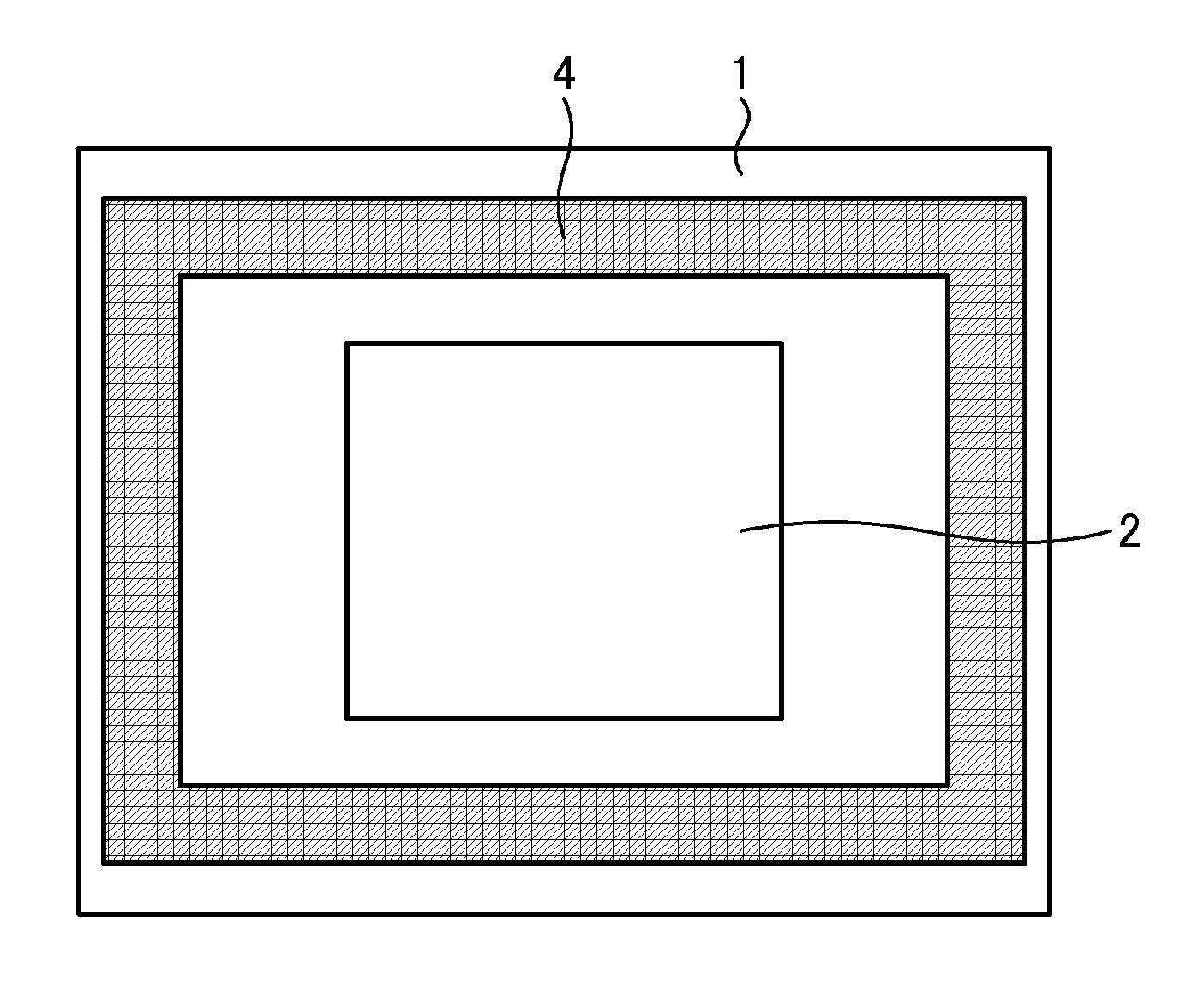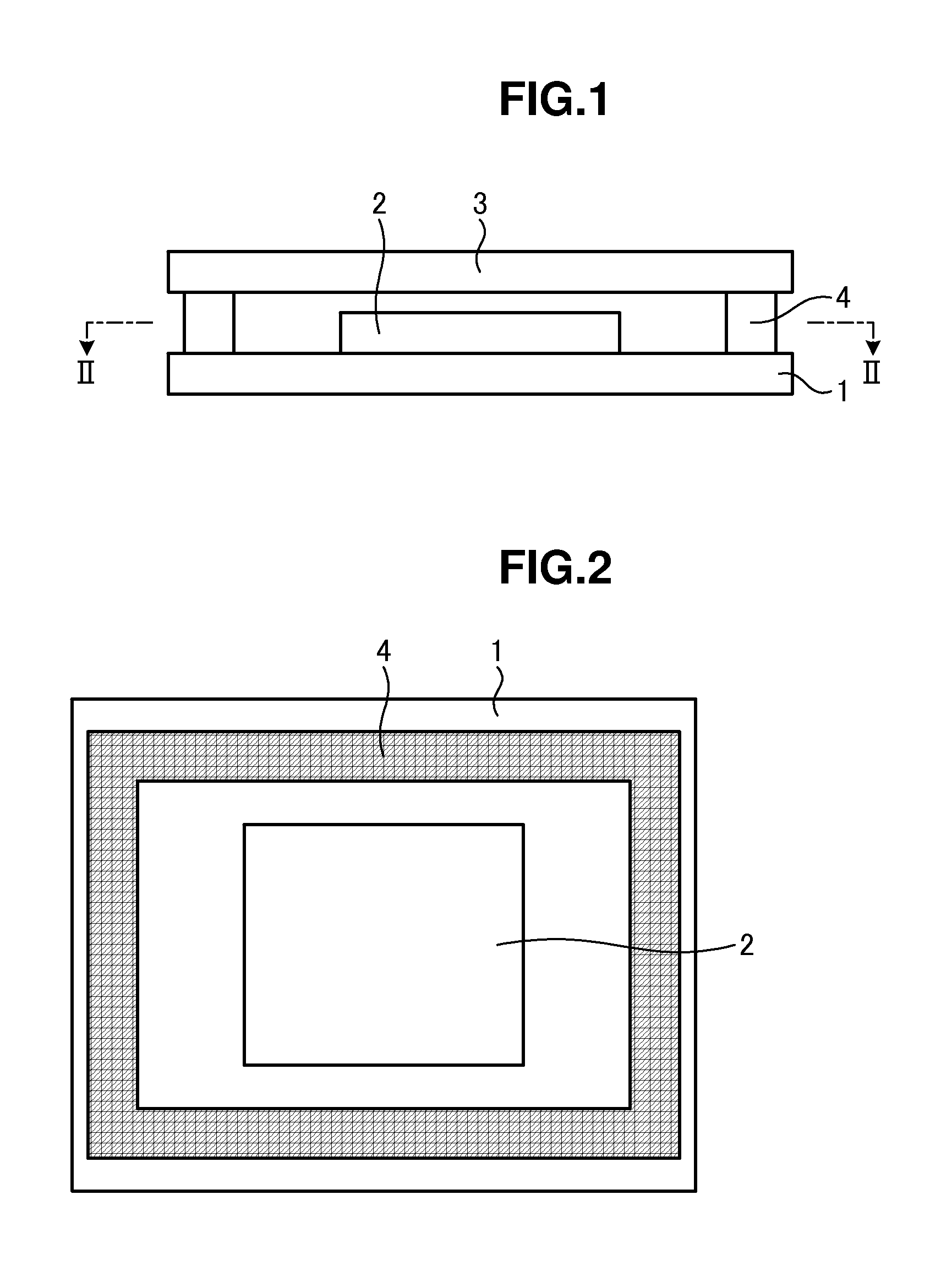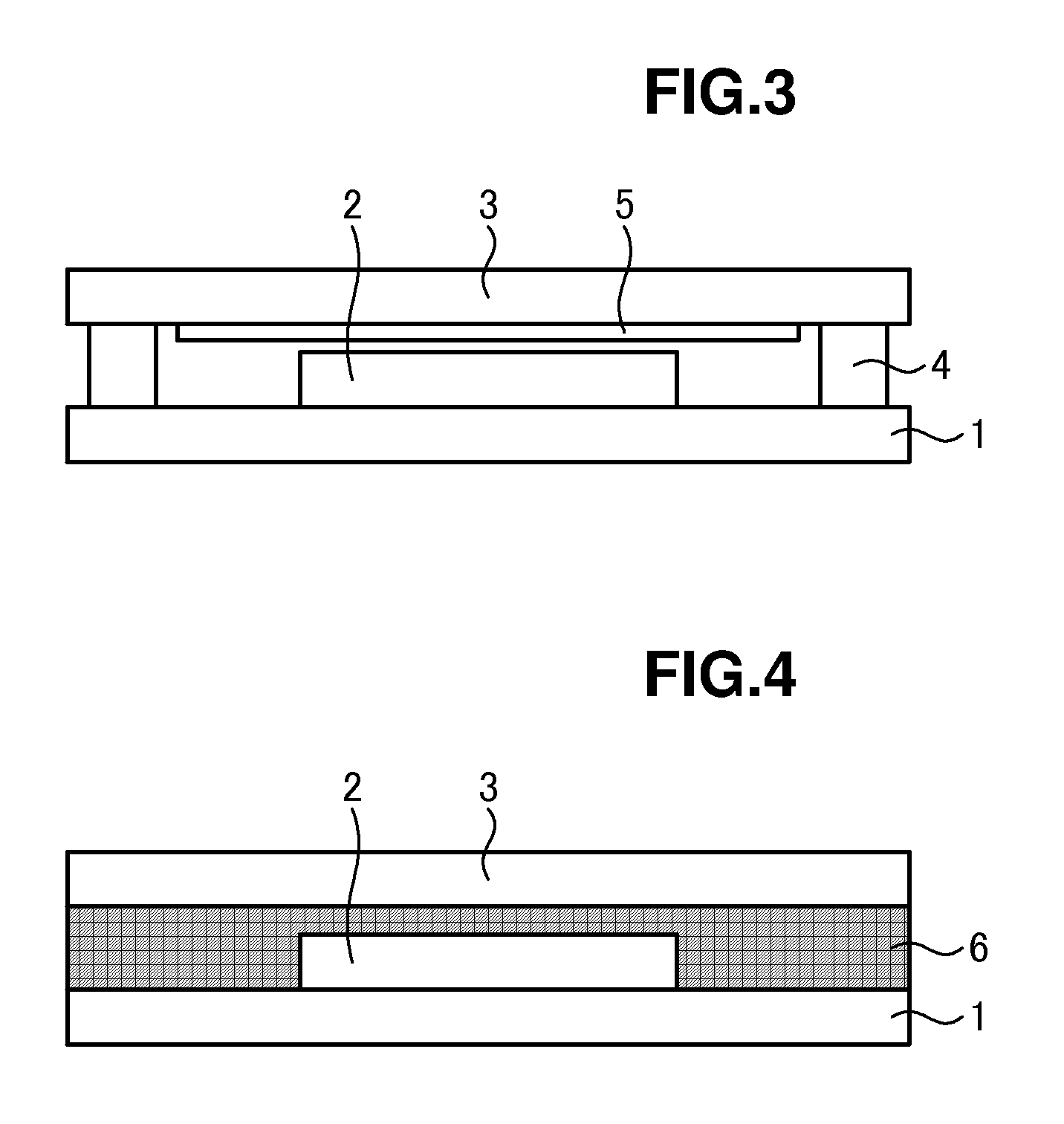Method for manufacturing organic light-emitting device and organic light-emitting device
a technology of light-emitting devices and organic light-emitting devices, which is applied in the direction of discharge tube luminescnet screens, sustainable manufacturing/processing, and final product manufacturing, etc., can solve the problems of difficult to obtain desired characteristics unstable air of electron injecting materials, and dark spot or lowering of life of organic light-emitting devices. , to achieve the effect of preventing the performance degradation of organic el elements and reducing manufacturing costs
- Summary
- Abstract
- Description
- Claims
- Application Information
AI Technical Summary
Benefits of technology
Problems solved by technology
Method used
Image
Examples
reference example 2
Synthesis of 2,7-bis(4,4,5,5-tetramethyl-1,3,2-dioxaborolan-2-yl)-9,9-bi s[3-ethoxycarbonyl-4-[2-[2-(2-methoxyethoxy)ethoxy]ethoxy]phenyl]-fluorene (compound B)
[0395]In a nitrogen atmosphere, the compound A (15 g), bis(pinacolate)diboron (8.9 g), [1,1′-bis(diphenylphosphino)ferrocene]dichloropalladium (II) dichloromethane complex (0.8 g), 1,1′-bis(diphenylphosphino)ferrocene (0.5 g), potassium acetate (9.4 g), and dioxane (400 mL) were mixed and the resultant reaction mixture was heated to 110° C. to heating-reflux the reaction mixture for 10 hours. The reaction mixture was left to be cooled down and was filtered and the filtrate was concentrated under reduced pressure. The reaction mixture was washed with methanol for three times. The resultant precipitate was dissolved in toluene and to the resultant solution, an activated carbon was added, followed by stirring the resultant mixture. Then, the mixture was filtered and the filtrate was concentrated under reduced pressure, thus obta...
reference example 3
Synthesis of poly[9,9-bis[3-ethoxycarbonyl-4-[2-[2-(2-methoxyethoxy)ethoxy]ethoxy]phenyl]-fluorene (polymer A)
[0397]In an inert atmosphere, the compound A (0.55 g), the compound B (0.61 g), (triphenylphosphine)palladium (0.01 g), methyltrioctylammonium chloride (manufactured by Aldrich Corp.; trade name: Aliquat 336 (registered trade mark)) (0.20 g), and toluene (10 mL) were mixed and the resultant reaction mixture was heated to 105° C. Into the reaction mixture, a 2M sodium carbonate aqueous solution (6 mL) was dropped and the resultant reaction mixture was refluxed for 8 hours. To the reaction mixture, 4-tert-butylphenylboronic acid (0.01 g) was added and the resultant reaction mixture was refluxed for 6 hours. Next, to the reaction mixture, a sodium diethyldithiocarbamate aqueous solution (10 mL, concentration: 0.05 g / mL) was added and the resultant reaction mixture was stirred for 2 hours. The reaction mixture was dropped into 300 mL of methanol and the resultant reaction mixtur...
experiment example 1
Synthesis of Cesium Salt of Polymer A
[0400]The polymer A (200 mg) was charged into a 100 mL flask and was purged with nitrogen. To the polymer A, tetrahydrofuran (20 mL) and ethanol (20 mL) were added and the temperature of the resultant reaction mixture was elevated to 55° C. Thereto, an aqueous solution prepared by dissolving cesium hydroxide (200 mg) in water (2 mL) was added and the resultant reaction mixture was stirred at 55° C. for 6 hours. The reaction mixture was cooled down to room temperature and therefrom, the reaction solvent was distilled off under reduced pressure. A generated solid was washed with water and was dried under reduced pressure, thus obtaining a light yellow solid (150 mg). By an NMR spectrum of the solid, it was confirmed that a signal ascribed to an ethyl group in an ethyl ester moiety in the polymer A disappeared completely. The obtained polymer A cesium salt is called a conjugated macromolecular compound 1. The conjugated macromolecular compound 1 con...
PUM
| Property | Measurement | Unit |
|---|---|---|
| pressure | aaaaa | aaaaa |
| thickness | aaaaa | aaaaa |
| thickness | aaaaa | aaaaa |
Abstract
Description
Claims
Application Information
 Login to View More
Login to View More - R&D
- Intellectual Property
- Life Sciences
- Materials
- Tech Scout
- Unparalleled Data Quality
- Higher Quality Content
- 60% Fewer Hallucinations
Browse by: Latest US Patents, China's latest patents, Technical Efficacy Thesaurus, Application Domain, Technology Topic, Popular Technical Reports.
© 2025 PatSnap. All rights reserved.Legal|Privacy policy|Modern Slavery Act Transparency Statement|Sitemap|About US| Contact US: help@patsnap.com



